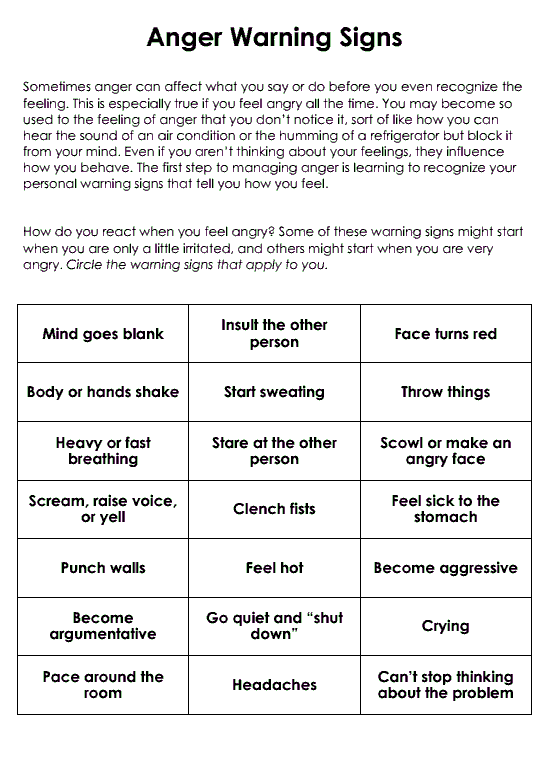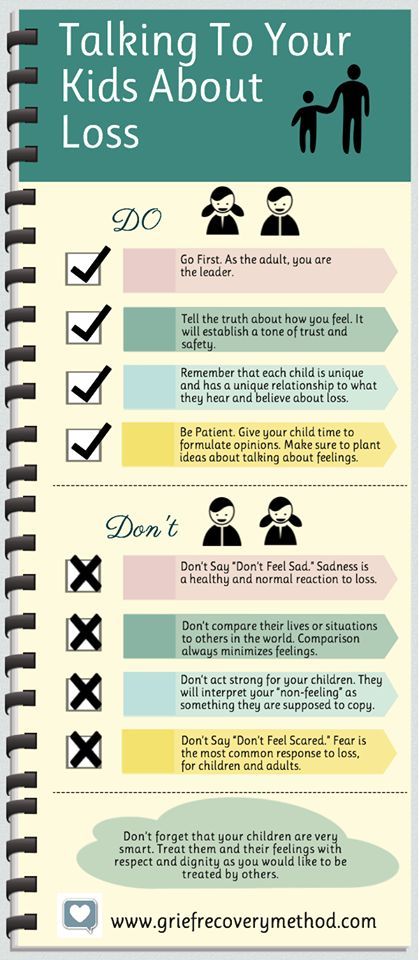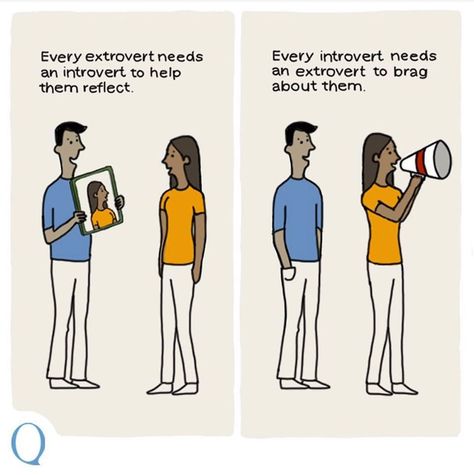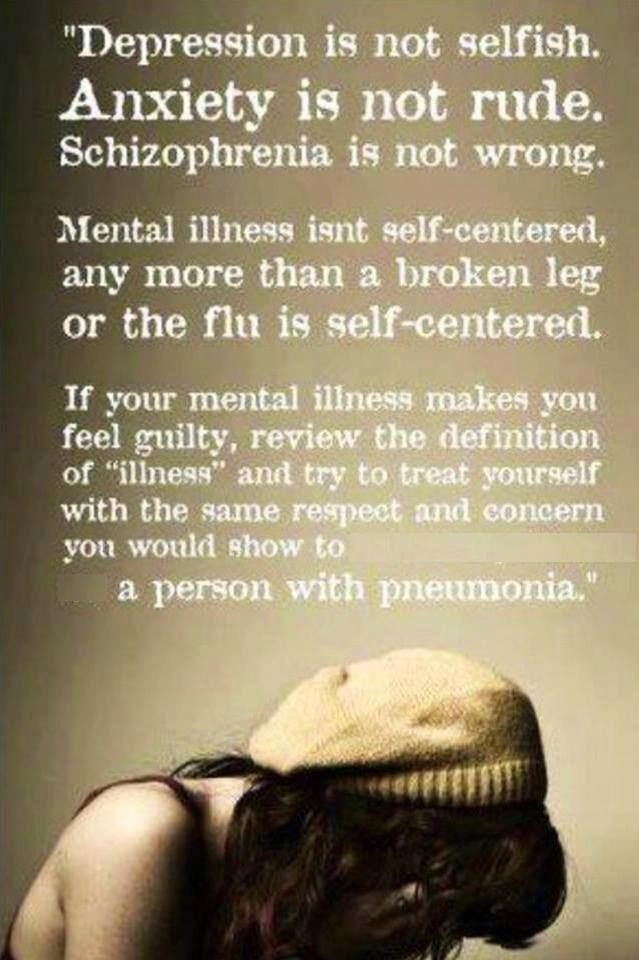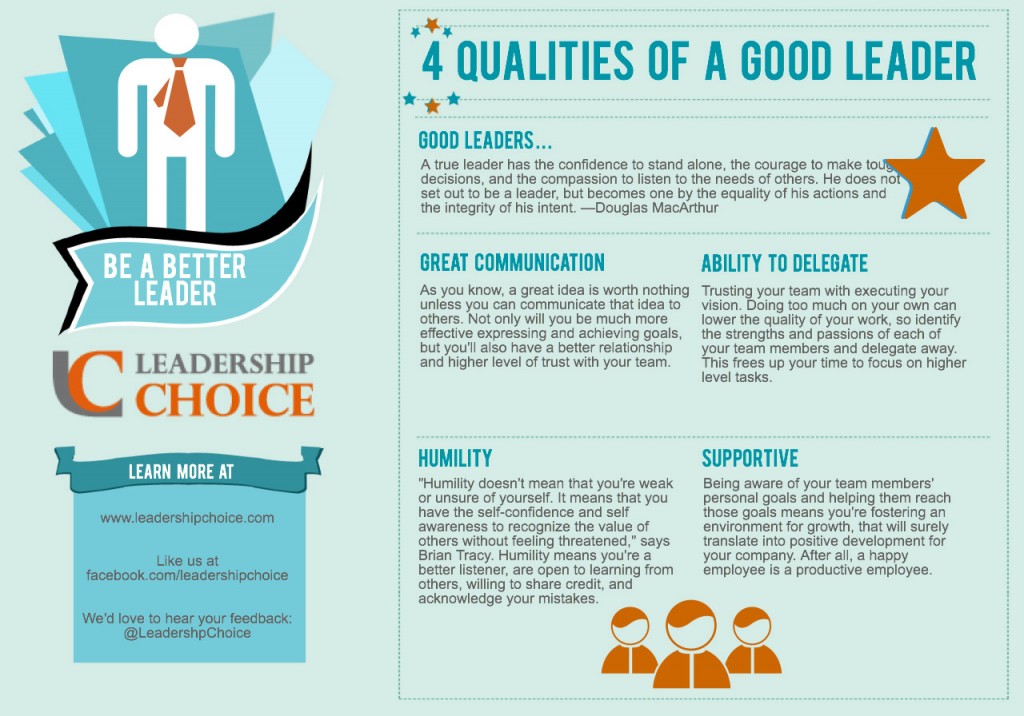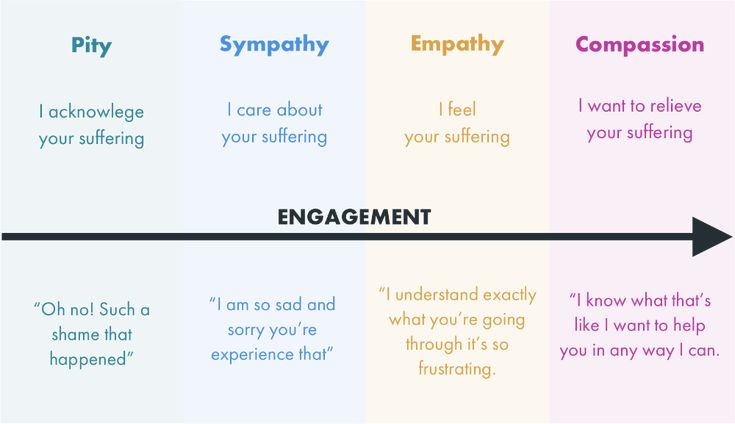Description of anger
A Master List for Writers
When I was working on The Phoenix Codex, I sometimes took way too much time thinking about ways to describe anger in writing. If my main character, Cassie, got angry enough, wild animals attacked whoever pissed her off, so she became very aware of how her anger feels.
I know lots of writers also get stuck on how to describe frustration in writing—or annoyance, or flat-out rage. Even when you’re just looking for a few words or a phrase, you can get bogged down. With that in mind, here are ways to write anger descriptions in a more vivid way than “he felt angry.”
Here’s something I can’t stress enough, though. When you’re writing about anger, there are a lot of ways to show the emotion…through what they say, how loudly they say it, what they’re thinking, and their actions (such as aggressively loading the dishwasher.)
My list of ways to describe facial expressions and my list of body language and gestures can both help in showing the emotion.
But once in a while, you want to describe your point of view character’s internal feelings of anger.
Obviously, this isn’t a comprehensive list. There are one hundred phrases here. A few of them hint at physiological reactions to the emotion of anger, and some employ similes. You can adapt them or mix them up a little, and they’ll probably make you think of more.
The ones that contain a verb can be turned into a phrase. For instance, “she was breathless with anger” can be used in a sentence like, “Breathless with anger, she stood up and walked out.’ Oh, and you can probably change some of these to describe hatred or loathing. And as long as the context is clear, you don’t need to name the emotion at all—a physiological reaction is often enough!
Be sure to pin the article to a Pinterest board or bookmark it for future reference!
he smoldered with resentment
rage flowed through her like lava
molten anger rolled through him
rage gripped her
anger poured through her
her temper sparked
anger stirred within her
his fury sprang to life
rage nearly consumed her
raw anger shot through him
rage pulsed through his veins
anger thrummed through her veins
anger flooded his veins
rage quickened her blood
she felt a flash of irritation
he felt a flicker of irritation
his anger spiked
anger rushed through her
anger overpowered her
rage overtook him
fury overcame her
he swallowed down his frustration
she tamped down her irritation
he mastered his anger
he kept his frustration in check
fury roared through her mind
a fresh swell of rage rose in her
anger rose in him like a tide
anger welled up in his chest
fury vibrated through her being
he burned with anger
irritation pricked at him
inwardly, she was seething
he trembled with rage
she shook with fury
he was quivering with anger
her resentment grew inside her like a tumor
his resentment festered in him
anger spread through him
rage filled her
his irritation flared
it roused her anger
it woke her anger
his edge of irritation had returned
fury surged through her
he went cold with fury
she was breathless with anger
he was wordless with rage
he was almost choking on his rage
nearly suffocating on her fury
she was simmering with anger
he was boiling with anger
a wave of fury crashed through her
he was running on sheer anger
her frustration kicked in
fury twisted inside of her
she was a ball of pure anger
she was about to explode with rage
he felt about to burst from rage
she was in a red rage
rage ran red through his brain
he stoked his anger
a vortex of anger swirled inside him
she fought the chaos of her rage
he tried to still his rage
he pressed down his anger
she struggled against her anger
he bit back his anger
anger heated her blood
rage seared through him
anger swept over her
resentment clouded her thoughts
he was blind with rage
she felt a jolt of anger
anger hardened her heart
rage beat at her heart
rage churned inside of him
he felt drunk on his rage
anger ripped through him
anger rippled through her
fury tore through her
inside, he was smoking with anger
his anger was mounting
her anger coiled in her stomach
he felt a stab of anger
she felt the anger building
he could taste blood
her irritation crackled
she was immobilized by fury
he was brimming with hostility
anger settled over her
rage throbbed in her like a heartbeat
rage pounded in him like a drumbeat
flames of anger licked through him
rage seized her
resentment blossomed within her
his anger felt good
she felt a cleansing anger
he felt a sick anger
he marinated in resentment
It actually took me a really long time to think about all of these! 🙂 I hope it’s a helpful list! I’m going to make a few more for other emotions.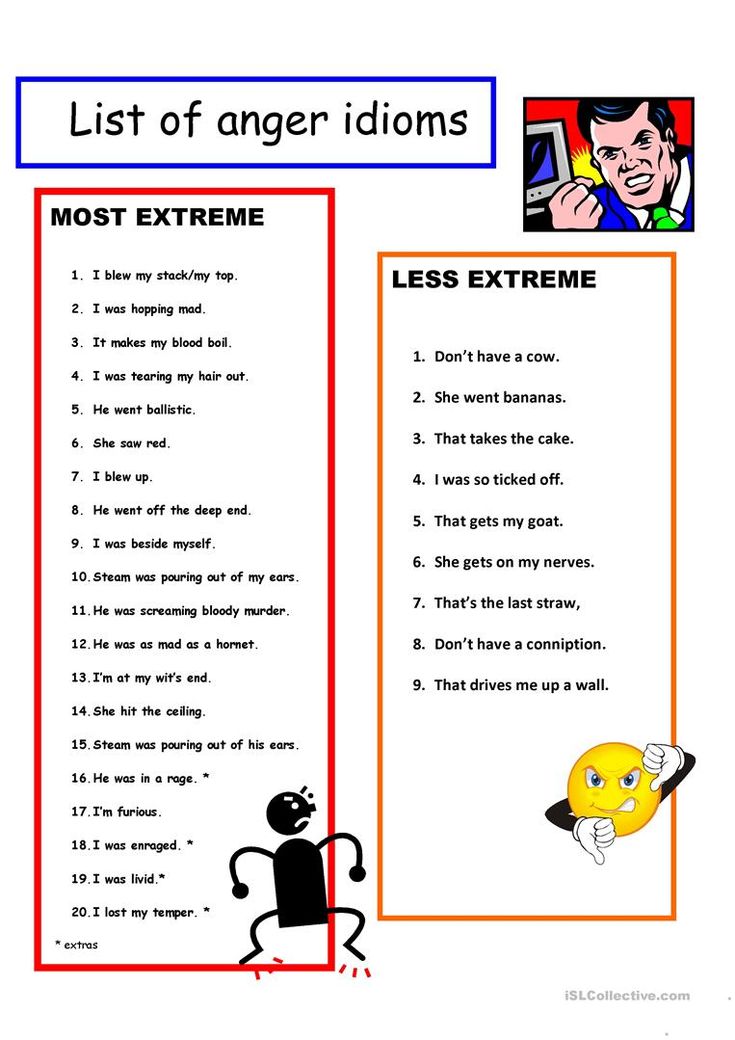 If you don’t want to miss those, be sure to follow the blog, if you aren’t already — there’s a place to sign up on the lefthand side of this website.
If you don’t want to miss those, be sure to follow the blog, if you aren’t already — there’s a place to sign up on the lefthand side of this website.
And in my book Master Lists for Writers, you can find a lot more lists. Take a look!
Thanks for reading, and happy writing!
Related Posts
Like this:
Like Loading...
37 Ways To Write About Anger
In this post, we have included 37 things for you to consider when you write about anger.
Other posts in this series include:
- 29 Ways To Write About Happiness
- 32 Ways To Write About Fear
- 43 Ways To Write About Love
- 40 Ways To Write About Empathy
- 37 Ways To Write About Grief
How do we write about anger in an authentic way?
We all get angry. It is natural and it can be a good thing. When it is uncontrolled or unnecessary, anger will not do us any favours on either a personal or a social level.
The same is true for the characters we create. When we write about angry characters, we should remember that there is always something behind this emotion. Anger is usually a surface emotion. It is a reaction to an underlying problem.
[Use our Character Creation Kit to create great characters for your stories.]
A) Motivation
We usually become angry when we feel afraid, because we are:
- Confused.
- Frustrated.
- Hurt.
- Jealous.
- Embarrassed.
- Powerless.
- Rejected.
- Worried.
We need to write about anger when our characters are feeling this way, but how do we incorporate it into our story? We can use body language, actions, non-actions, and reactions to show this emotion.
B) Body Language
Physical signs of anger include:
-
An increased heart rate.
-
Feeling hot or flushed.
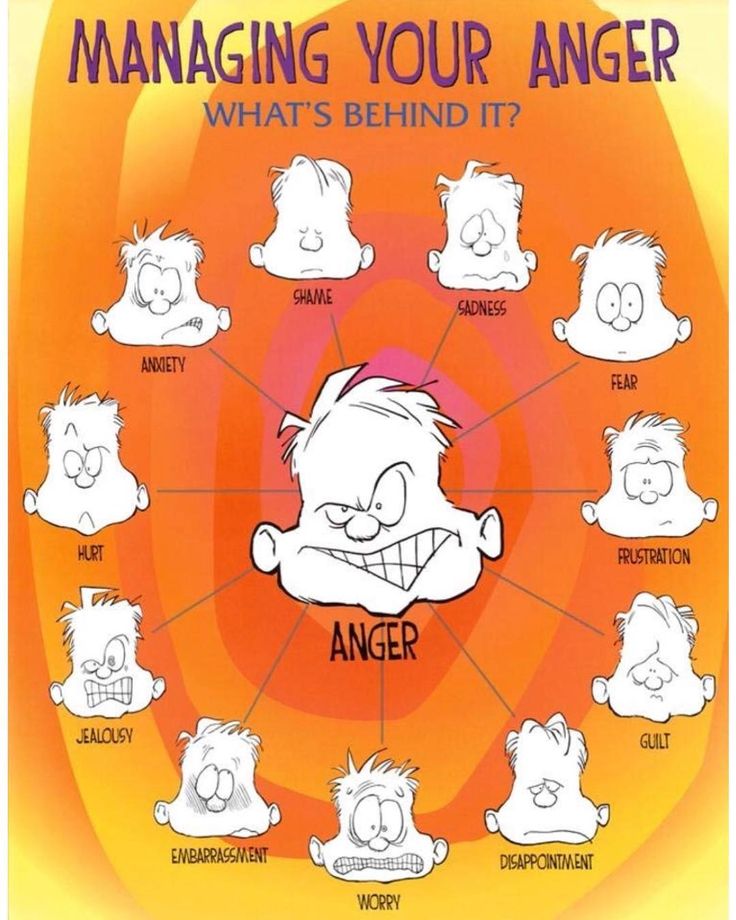
-
Shaking.
-
A clenched jaw.
-
A dry mouth.
-
Shouting, ranting, making loud noises.
-
Staring.
-
Baring teeth.
-
Finding it difficult to hear.
-
Tense muscles.
C) Passive Or Aggressive – How Angry Is Your Character?
We generally express anger in two ways.
-
We withdraw – passive behaviour
-
We lash out – aggressive behaviour
Being passively angry can be as destructive as being aggressively angry.
D) Ways To Create
Conflict With AngerSeven ways a character can show passive anger:
-
Being defeatist. Examples: underachieving, choosing to repeat a proven failed behaviour pattern, being accident-prone.
-
Being secretive. Examples: anonymous complaints, gossiping, conning.
-
With dispassion.
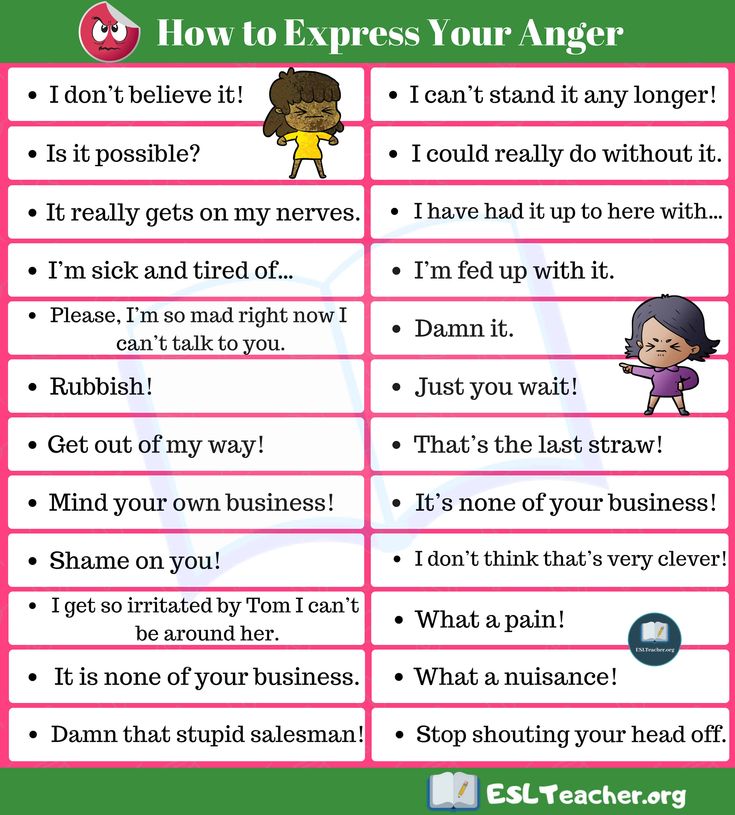 Examples: giving the cold shoulder, the silent treatment, substance abuse, talking about emotions without showing any, oversleeping, playing with electronic equipment or machines.
Examples: giving the cold shoulder, the silent treatment, substance abuse, talking about emotions without showing any, oversleeping, playing with electronic equipment or machines. -
Evasion. Examples: avoiding conflict, becoming phobic.
-
Exhibiting obsessive behaviour. Examples: overeating or dieting too much, obsessively tidying up.
-
Manipulation. Examples: provoking bad behaviour in others, playing the victim, emotional blackmail, feigning illness, using other people to deliver negative messages.
-
Self-Blame. Examples: apologising for everything, criticising their own behaviour, inviting criticism.
Source: SavageChickens
Seven ways a character can show aggressive anger:
-
Behaving manically. Examples: speaking, moving, and driving too quickly; overworking; spending too much money.
-
Being physically destructive.
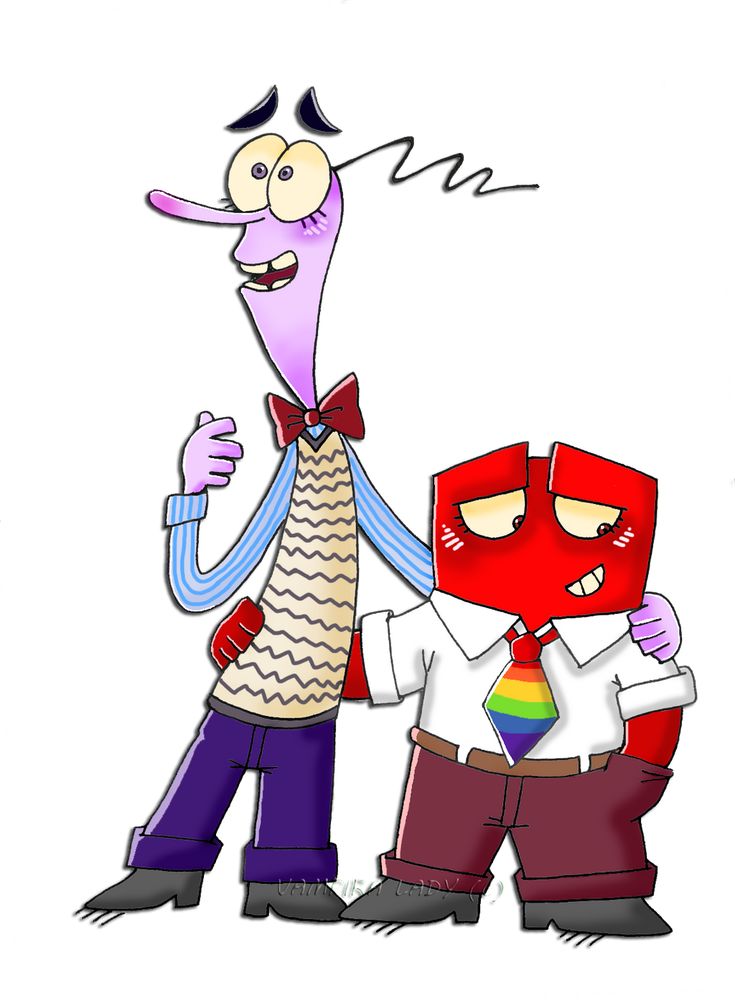 Examples: vandalism, reckless driving, substance abuse, harming animals.
Examples: vandalism, reckless driving, substance abuse, harming animals. -
Being selfish. Examples: being unpredictable, ignoring other people’s feelings and needs, ignoring requests for help.
-
Being vengeful. Examples: holding a grudge, planning to hurt someone.
-
Bullying. Examples: making threats, persecuting, misusing power, shouting, explosive rages over small problems, illogical arguments.
-
Physically or psychologically hurting people. Examples: sexual abuse, verbal abuse, ignoring people’s feelings, punishing people, making inappropriate jokes, being vulgar, blaming people for something they did not do.
-
Showing off. Examples: talking over other people, throwing money around, acting as if you are better than someone else is, lying about achievements.
Tip: Try The 12 Question Fiction Writing Conflict Test to see if you have enough conflict in your novel.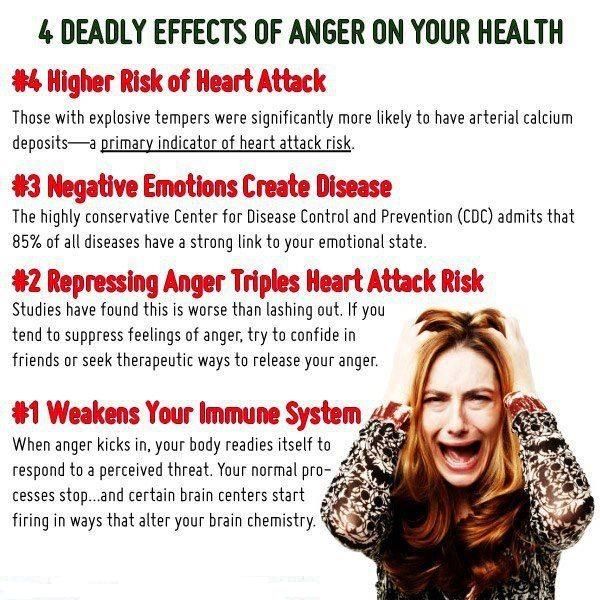
E) The Importance Of Anger In Plotting
As a writer, you can write about anger, and use it to move the plot forward in many ways:
- You can force a confrontation that moves the plot forward. A character may use it as a catalyst that allows an escape from an unhealthy relationship.
- You can reveal another side to a character that nobody dreamt existed. The mild-mannered man nobody suspects of domestic violence could be revealed with an angry outburst.
- You can also use it as a transformative experience. A character who has reacted angrily to an event could regret it and choose to change his or her behaviour.
How do your important characters deal with anger?
If you enjoyed this article, you will love:
- 29 Ways To Write About Happiness
- 32 Ways To Write About Fear
- 43 Ways To Write About Love
- 40 Ways To Write About Empathy
I hope this post has given you some ideas on how to write about anger.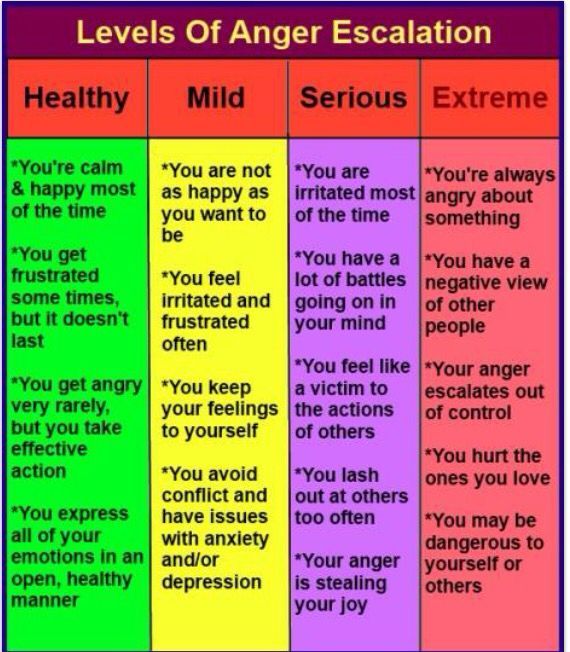
Source for examples of passive and aggressive anger
© Amanda Patterson
If you liked this post, read these:
- How To Write A One-Page Synopsis
- 5 Incredibly Simple Ways To Help Writers Show And Not Tell
- 10 Ways To Introduce Conflict In Dialogue
- Universal Needs – Creating Characters
- 9 Good Reasons For Your Character’s Bad Behaviour
- 12 Crucial Things To Remember About Setting
- The 7 Critical Elements Of A Great Book
Top Tip: Find out more about our workbooks and online courses in our shop.
Posted on: 27th March 2015
Basic emotions: what is anger
In religion, anger is one of the deadly sins, and there is something subtly attractive about it (of course, when it is not directed at us). We love to watch athletes rushing to victory, whose determination is mysteriously intertwined in the moment with anger, and we love to watch the heated debate of politicians who are not always able to refrain from cursing.
 But of course, we are much more hesitant about anger in our own lives. As part of a series of materials on basic emotions, we continue to understand feelings - this time about what makes us angry.
But of course, we are much more hesitant about anger in our own lives. As part of a series of materials on basic emotions, we continue to understand feelings - this time about what makes us angry. Anger is an emotion ranging from mild annoyance to intense rage. Many people think of anger as a negative feeling that excites us emotionally and makes us say things we sometimes don't even mean. Against this background, it may seem that anger is a kind of unnatural distortion of who you really are. But this is not true.
Anger is a perfectly natural emotion that alerts us when something is disturbing the natural order of things we think things should be. And it literally drives me crazy! The physical effects of anger are meant to encourage us to take responsibility and restore the balance of right and wrong. For this to happen, we must get angry for the right reason and express our anger properly. But how do you know which anger triggers are justified?
Many reasons to be angry
Everyone can probably name a few things that make them angry. An acquaintance who is always late, toys constantly scattered on the floor, a driver on the road who does not know how to drive by the rules, call center employees who call with stupid offers ... The list is endless, but all these things come down to two aspects: violation of expectations and blocking targets. We expect to be treated fairly and get angry when we are yelled at for no reason. If our goal is to have a quick bite to eat before rushing to the train, a long line at the cafeteria can cause some anger.
An acquaintance who is always late, toys constantly scattered on the floor, a driver on the road who does not know how to drive by the rules, call center employees who call with stupid offers ... The list is endless, but all these things come down to two aspects: violation of expectations and blocking targets. We expect to be treated fairly and get angry when we are yelled at for no reason. If our goal is to have a quick bite to eat before rushing to the train, a long line at the cafeteria can cause some anger.
If others do not adhere to our social or personal norms, we get angry
Anger triggers are different for everyone and depend on age, gender, background and even culture. In one study❓Tavris, Carol. Anger: The Misunderstood Emotion. Simon & Schuster. 1982. assessed anger in infants of different nationalities, and it turned out that Chinese infants were generally calmer in any experimental situation. For example, in one experiment, scientists briefly pressed a cloth against a baby's face, and American babies tended to get nervous and push it away, while Chinese babies put up with the presence of something on their face without getting "angry" about it.
But while this study is interesting, it certainly does not mean that anger is built into a particular culture. It doesn’t even mean that the child will necessarily grow up angry: other studies have shown that a one-year-old child with a tendency to tantrums can eventually turn into a completely soft and calm five-year-old. However, each of these babies will recognize the triggers that are acceptable to their culture and how the culture will deal with them.
Another interesting observation❓Thomas, Sandra P., Carol Smucker and Patricia Droppleman. It hurts most around the heart: a phenomenological exploration of women's anger. Journal of Advanced Nursing. 1998. - Anger in women is more often caused by close relationships: they often feel disappointed in relation to family members and friends, or feel that these people expect too much from them, without giving anything in return. A man is more likely to be angered by the behavior of strangers, objects that don't work properly, and larger social issues that raise concerns about right and wrong.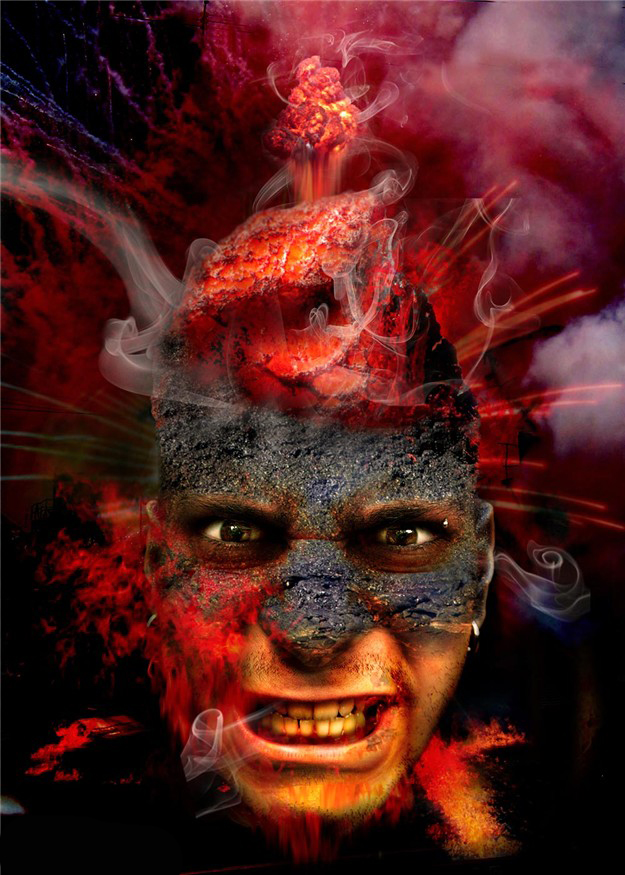
Male anger is a bit more abstract, female anger seems to be mixed with emotional pain, and childish anger tends to be about blocking goals and objects (try taking a toy away from a child!)
But these triggers alone are not enough to make us angry. In fact, there is a mental component by which we judge whether anger is a justified response. Literally in a split second, we find out who is to blame, how dangerous the trigger is, whether the action could have been avoided, and whether anger would be useful at all in this situation. We also evaluate the intent of the person behind the trigger based on the information we have. So, we can get angry at a driver who cuts us off and breaks the rules of the road. But if we find out that he did this because he is trying to get to the hospital in time for the birth of his first child, our fervor will probably subside.
The brain determines if a trigger justifies our anger in less than a minute, but what happens to the body while the brain is busy with this assessment?
The physical effects of anger
Do you remember the cartoon "Inside Out"? When a character representing anger gets angry, steam comes out of his ears, and he himself is red from head to toe. In real life, anger has about the same effect on our body. The response certainly varies from person to person, but some symptoms are common and include grinding teeth, clenching fists, redness or blanching of the skin, tingling, numbness, sweating, muscle tension, and changes in body temperature.
In real life, anger has about the same effect on our body. The response certainly varies from person to person, but some symptoms are common and include grinding teeth, clenching fists, redness or blanching of the skin, tingling, numbness, sweating, muscle tension, and changes in body temperature.
Anger also has special mimic expressions - like other basic emotions, anger is easily read on our face:
The feeling of anger can differ from person to person: women, for example, are more likely to describe anger as a feeling that slowly builds up through the whole body , while men describe it as a raging fire, generally more active and faster. In any case, the sensations described are very similar to the "fight or flight" reaction - the body is preparing for a fight in order to survive the evil committed against you. Chemicals such as adrenaline and norepinephrine permeate the body.
In the brain at this moment, the amygdala, the part of the brain responsible for emotions, goes crazy.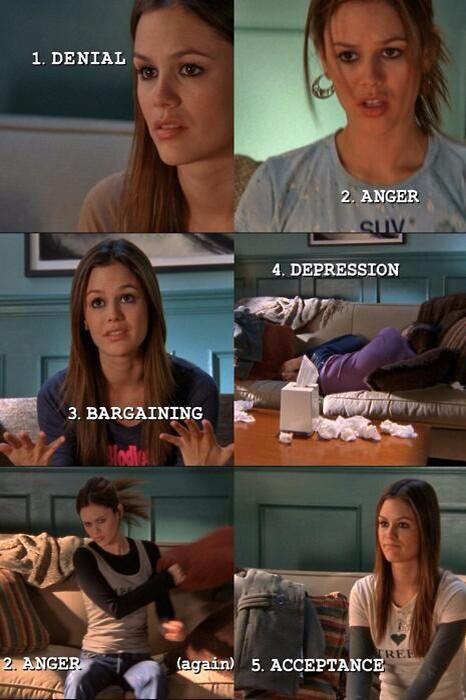 The brain really wants to somehow respond to the irritating factor and its “thinking” about it, the time between reading the trigger and the response of the amygdala can be only a quarter of a second. However, at the same time, blood flow to the frontal lobe increases, especially to the part that is above the left eye - this area controls reasoning and probably in most cases prevents us from simply picking up and throwing a vase across the room at an expensive TV. Usually, these areas balance each other out quickly (the neurological response to anger lasts less than two seconds), which is why you can find so many tips from category 9.0041 "count to 10 before reacting" - this works because the brain has time to calm down.
The brain really wants to somehow respond to the irritating factor and its “thinking” about it, the time between reading the trigger and the response of the amygdala can be only a quarter of a second. However, at the same time, blood flow to the frontal lobe increases, especially to the part that is above the left eye - this area controls reasoning and probably in most cases prevents us from simply picking up and throwing a vase across the room at an expensive TV. Usually, these areas balance each other out quickly (the neurological response to anger lasts less than two seconds), which is why you can find so many tips from category 9.0041 "count to 10 before reacting" - this works because the brain has time to calm down.
Are animals angry?
It's easy to imagine that animals are just as angry as we are. The bull is "annoyed" by the red rag (in fact, the bulls are color blind), and he is ready to smash everything around. You accidentally step on a cat's tail, it hisses, arches its back and seems ready to kill the offender. Finally, dogs growl and bark at people passing behind the fence. However, anger requires a mental component that many scientists believe animals are not capable of. Anger and fear stimulate similar mechanisms in the body, and the reaction of the animal is most likely associated with fear, the primary emotion. Anger is considered a secondary emotion because, on top of that, we use our brains to attribute guilt.
Finally, dogs growl and bark at people passing behind the fence. However, anger requires a mental component that many scientists believe animals are not capable of. Anger and fear stimulate similar mechanisms in the body, and the reaction of the animal is most likely associated with fear, the primary emotion. Anger is considered a secondary emotion because, on top of that, we use our brains to attribute guilt.
If anger triggers constantly hit you, a persistent state of neurological response can begin to damage your health. At the same time, chronically angry people may not have a mechanism for "turning off". For example, their bodies may not produce acetylcholine, a hormone that moderates the more severe effects of adrenaline. As a result, their nervous system is constantly turned on and in tension, which ultimately can lead to overwork, weakening of the heart and stiffening of the arteries. There is also the possibility of damage to the liver and kidneys, increased cholesterol levels.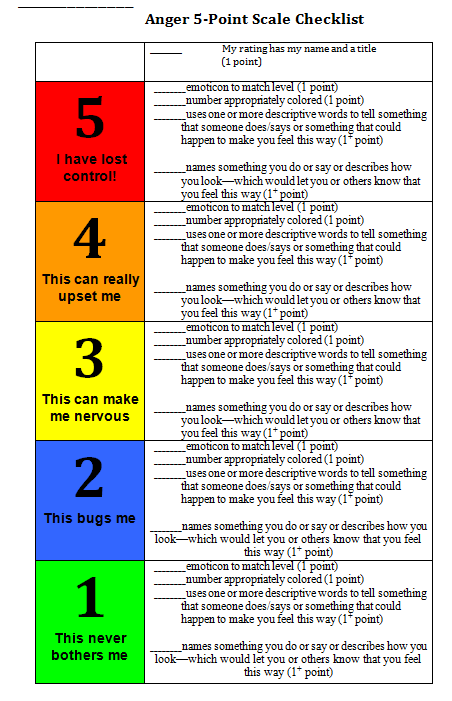 Finally, anger can cause associated mental problems such as depression or anxiety.
Finally, anger can cause associated mental problems such as depression or anxiety.
In one study of nearly 13,000 subjects, people with the highest levels of anger were twice as likely to have coronary heart disease and three times as likely to have a heart attack compared with subjects with the lowest levels of anger.
Some scientists believe that chronic anger as a contributing factor to early death may be even more dangerous than smoking and obesity trifle. However, for others, conscious work on expressing anger may be required.
How to express anger correctly
Anger cannot solve the problem that makes you angry, but its physical signals warn you to do something and express anger in the right way .
The expression of anger usually takes one of three forms: expressing anger, expressing anger, and controlling anger. Anger quite often turns anger inward, since in many societies open expression of it is something unacceptable.
The pent-up anger can escalate into unproductive passive-aggressive behavior, such as silent resentment (“pouting”) or sarcastic comments. However, while you shouldn't hold back your anger within yourself, attacking anyone who makes you angry is also unlikely to make you feel better in all cases. The ideal expression of anger is the practice of controlling it.
In one of the studies❓Weber, Hannelore. Explorations in the Social Construction of Anger. Motivation and Emotion. June 2004. Respondents determined that talking to the abuser was the most appropriate way to deal with anger. And this is not about swearing at another person, but about a specific explanation to him why you are angry. Of course, this way of expressing anger can sometimes make it useful - we strive to remove negativity from our lives, which means that a constructive expression of anger can make us, for example, fix relationship problems.
But although we know that talking is the most productive way to control our anger, this does not mean that we can always and everywhere practice this approach.
It is hardly possible to track every careless driver on the road in order to calmly talk to him ... In cases where this is not possible, it is important to find other healthy ways to get your body out of anger. For example, go in for sports, meditate or watch your favorite series. There can be a lot of ways to relax, and they are individual for each person (the main thing is to find those that will calm you without harming other people).
Chronically angry people expect disappointment in the events around them for many years - as a result, these people react more angrily even to small stressful events, but in doing so, they create even more reasons for anger. Unfortunately, the result of this condition is health problems, higher levels of family conflict, and lower levels of social support due to how anger affects others. If you feel like your emotions are taking over, it might be time to start thinking about anger management practices.
Anger is normal (but you still have to work with it)
PSYCHOLOGY / August 22
Where does anger come from? Initially, anger was given to man so that he could get angry, go hunting and feed himself, and maybe conquer the world.
Anger is the force that motivates a person to act.
Now we don't see mammoths on the streets, but we communicate with other people every day. And we keep getting angry. So where does it come from?
The first reason is exhaustion. When the body lacks resources, a person rises in search of them and at the same time tries to save himself by driving away all potential competitors. Therefore, lack of sleep, pain, even poor nutrition can easily become the cause of anger. In adults, an imbalance of fat in the body increases irritability, and in children, a large amount of sugar increases excitability.
The second reason is the frustration of the need to be accepted. When a person feels that there is no place for his interests, his opinion in the family or at work, that he lacks support and love, he accumulates aggression. Most often, such situations arise with people who do not know how to express it; we will talk about them below.

The third reason is not understanding why the other person behaves the way they do. Why is your partner rude every time you try to find out where he is now? Why does a five-year-old child not sit quietly in the theater, but throw his arms and legs at his neighbor? An adult believes that his partner is just nervous, and the child does not respect other people's boundaries. In fact, it may turn out that the partner had a controlling mother and he still perceives questions as a violation of his freedom, and an emotionally immature child is so fond of the performance that he cannot control himself.
The fourth reason is the need for protection. When a child screams in the street and the mother cannot do anything, she becomes angry. First of all, the fact that she is losing control, and everyone sees it. Protection may be needed from pain, sadness, disappointment - in general, from all difficult emotions that threaten psychological security.
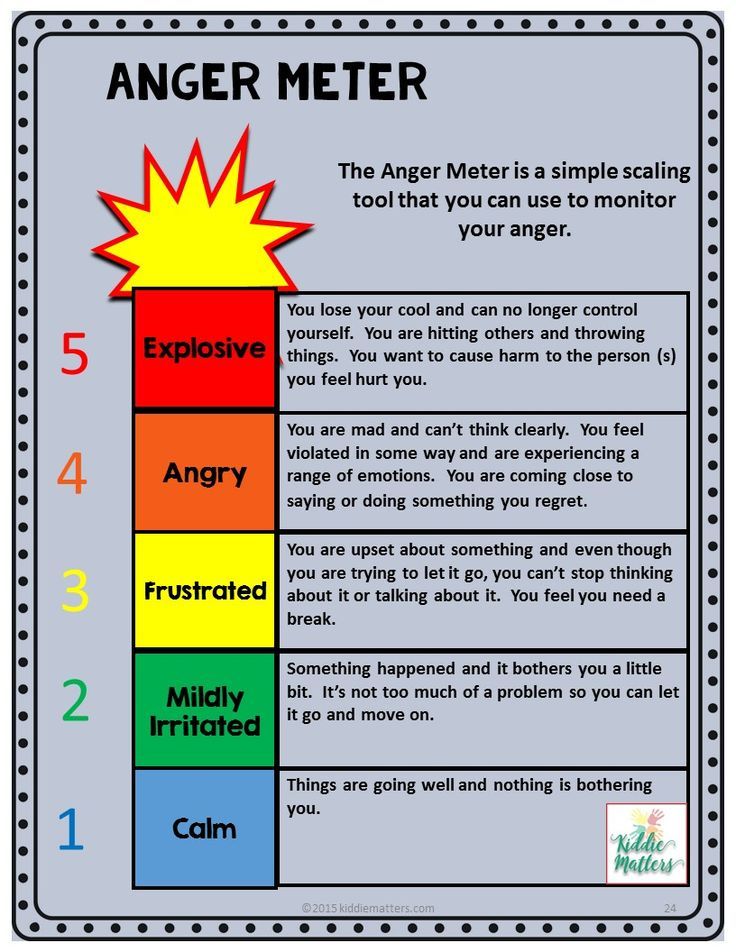
The fifth cause of anger is a threat to self-esteem. Sometimes a feeling of guilt arises because of the behavior of a loved one. “I am a bad mother” if the child screams and falls, if he is silent and plays the tablet, if he eats a lot, if he eats little... This situation makes you try to be good all the time and do everything right. It is especially difficult for perfectionists, that is, those who had the “be good” mindset in childhood in response to parental demands. The result is repressed aggression, more guilt and more anger.
Why we do not remember our childhood feelings
Psychoanalytically oriented psychologists are sure that our relationship with anger comes from childhood. All adults were once small, they experienced anger and somehow learned to cope with it, and then ... However, let's go in order.
Imagine that a baby is born. He is surrounded by love, care and is in symbiosis with his mother.
The first six months is the state when he actually considers his mother as his continuation. A very close bond is necessary for the infant to survive.
Having matured a little, the child is still convinced that the mother exists only to feed, warm, entertain. But is it? Of course not. Over time, the needs of the mother, who needs to go to the toilet, wash her hair, go to the store, and sometimes just sit with a cup of tea, become more and more pronounced. Sometimes a mother is not ready to give her child love and care because she is tired, and this is completely normal.
Alas, at this moment the child is frustrated. He feels that his needs are not being met in the way he used to, and begins to get angry. At the peak of experiences, the child realizes the presence of a third and understands: the mother is actually not his, but her own and father's. The kid is going through a hard time the impossibility of being with his mother entirely. This anger often goes unexpressed because "angry is bad.
"
There is also the reverse situation, but it also generates anger. If the family revolves around the child, he simultaneously feels insanely important and very sick, that is, unable to take care of himself, inept, the one who needs to be monitored, controlled, helped all the time. Aggression also arises in this situation.
All this happens between the ages of 4 and 6. At the same time, fantasies and fears arise in the child: a monster is hiding under the bed, witches are flying outside the window, darkness is just waiting to pounce from behind the closet door ... During this period, the child may begin to masturbate to cope with anxiety, or become aggressive in the nursery. garden. All his activity is aimed at coping with emotions. This is quite difficult, and as a result, children's feelings are forced out into a symbolic "basement", placed under lock and key by the psyche. And this means that in most cases the child ceases to remember them: childhood amnesia sets in.
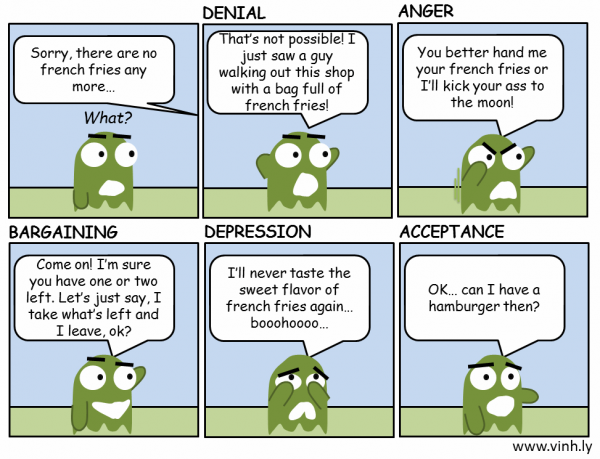
And so a person grows up, builds a family, he has his own children - and his own feelings are still repressed, forgotten. However, it is with them that both he and his partner have to deal.
"Red Buttons"
There are situations that make an adult explode. The reaction is not always adequate to the situation - the one who caused the outburst of anger thinks to himself: "What did I say? .." In fact, he, without knowing it, pressed the "red button". Each person has their own content of these buttons, but globally they are divided into two types.
1. The last straw
Let's say a mother gives to her child all the time. She plays with full dedication, eats lunch in five minutes, does not close the door to the toilet, hardly sleeps... Or, on the contrary, she spends 10 hours a day at work, barely has time to play with her child in the evening, and also cooks soup, cleans the floor, reads a book on how to communicate with a child .
.. And finally, the husband says something about an unwashed plate. Can you imagine the reaction? Explosion! The problem, of course, is not in the plate. When a person holds back emotions for a very long time, anything can serve as the last straw.
What to do about it: don't sacrifice everything for one area of life, but do exactly as much as you can; track irritation and fatigue at the very beginning; talk about it to relatives and carry out prevention (“make children a happy mother”) until the glass overflows.
2. Sore callus
Suppose a person had a father who kept track of what time the child came home all his childhood, controlled whether the light in the bathroom was turned off, whether the closet was tidied up, whether the dishes were washed. Or the mother constantly read the diary, interfered in relationships with peers, aggressively invaded life. Or already in adulthood, the previous partner terrorized with calls. Therefore, past experience can be included in new relationships.
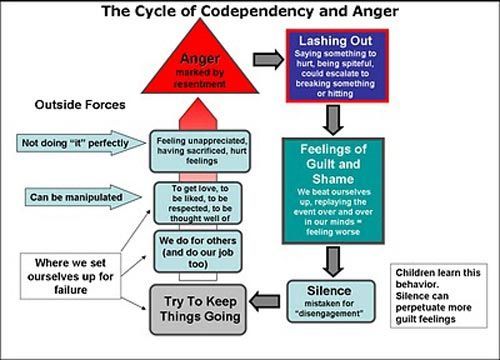
“Listen, maybe you should leave the meeting earlier than the rest of us because you’ll be walking down a dark street?” - the partner asks. "What are you telling me? But why should I always do everything as you said?" - A sudden explosion occurs.
The red button can be an emotionally charged experience from any period of life when a person has experienced and suppressed anger.
What to do with it: don't sacrifice everything for one area of life, but do exactly as much as you can; track irritation and fatigue at the very beginning; talk about it to relatives and carry out prevention (“make children a happy mother”) until the glass overflows.
Ladder of anger
Both an adult and a child can find themselves in a situation where sparks are already flying, a scream or even a fight begins. Sometimes it is not clear how a calm situation turned into this.
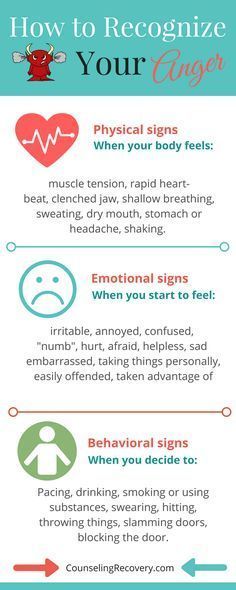
What's going on? Anger does not appear immediately, but goes through several stages before reaching a peak. This can be represented as a ladder. Everything starts in the zone of emotional comfort, where it is calm and nothing disturbs. This is a different situation for every person.
We recommend that you think about when this state occurs for you: when you are lying on the sofa with a book, walking in the park, playing with a child, at work.
The next step is irritation. Someone said something wrong, did something wrong, everything does not go according to plan - and the person starts to boil. In this state, you can still think and understand what caused the irritation.
Here it is important to notice the first notes of irritation, before they grow into uncontrollable aggression.
The last step is an emotional outburst. There is no control in it: a person is no longer aware of what is happening to him, cannot analyze his behavior, does not want to stop and turns himself on.

Do you remember the slogan: “It is better to prevent a fire than to put it out”? When you are already at the last step, only the automatic mechanism for getting out of the current situation will work. For example, run out of the room shouting: "That's it, I can't take it anymore", - and take a breath. But this does not solve the problem globally. Therefore, we recommend that you develop a mechanism for how to deal with irritation at the previous stage, and then you simply will not reach the peak of uncontrollable anger.
WHAT HAPPENS IF YOU DON'T EXPRESS ANGER
Have you ever met people who have difficulty expressing anger?
The problem is that this emotion still arises, but it is expressed inadequately: it either blows up a person inconsistently with the situation, or hides and makes itself felt in the form of passive aggression
Unfortunately, this is a very common story: in our culture, the open expression of strong emotions is taboo, we are taught from childhood not to be angry.
People who do not know how to be angry, as a rule, are captured by their childhood conflicts. They cannot talk about their needs and adequately defend their position, they are internally irritated with themselves and others that they do not succeed.
Sometimes they don't even realize that they feel anger and can't do anything about it. The problem is that this emotion still arises, but it is expressed inadequately: it either blows up a person inconsistently with the situation, or hides and makes itself felt in the form of passive aggression. Let's say a person gets a job. At first he shows himself well, but over time he begins to sabotage everything. And his boss is a fool, and the tasks are not according to his standards, and his colleagues do everything wrong. As a result, a person is fired or leaves on his own, and the cycle begins anew. At the same time, he can become a domestic tyrant: find fault with the fact that the dishes are not washed, slippers are not right, the child is naughty.
Emotional and physical rejection between spouses (unwillingness to talk, listen, make love) also speaks of passive aggression. In children, it can manifest itself through poor grades or refusal to eat, that is, neglect of what is important to parents. What's happening? A person cannot express his anger directly, so he begins to do things that will anger others and lead to a break in relations.
If you see a person who constantly blames others, thinks that everyone around is fools, this is a person with suppressed anger. In childhood, he could not be angry, especially at his parents, and he unconsciously "acts out" in adulthood.
It is worth remembering that anger is an emotion, it will arise in any case. And it depends only on us how it will be expressed in behavior and how it will affect our relations with others.
How to help yourself deal with anger
It is already clear that it is necessary to express anger, and it is preferable to do it constructively.
Such a skill improves life, makes a person a more integral personality and allows you to build harmonious relationships with others. So how can you help yourself deal with anger?
1. Learn to recognize irritation in yourself before it develops into anger
sleep. Remember that the first cause of anger is the exhaustion of the body. Allow yourself to rest, arrange a “detox” from your daily routine, arrange with family members to help you with this.
Second, look at past experiences. What makes you angry and angry? If you have already found your pain points, try to notice them in different situations.
2. Allow yourself to feel
Despite children's attitudes, there are no good and bad emotions. Feeling and expressing is normal. Moreover, anger, resentment, sadness and anger are due to the characteristics of the human body. If you completely deny negative emotions and try to pretend that you have a solid positive, problems ensue.
As soon as you admit to yourself what you are really experiencing and allow yourself to be with it, the feeling of guilt will go away. This means that anger will not accumulate, risking erupting at the most unfortunate moment.
It is important to teach children the right to feel. They understand how much parents allow themselves and others to express emotions, even if they have never been spoken to about it. Access to anger must be open: if an adult learns this first, then a child can follow him.
3. Taking responsibility
Of course, your relationship with anger was formed in childhood, in your family of origin. Then you still didn’t know how to deal with difficult emotions. But now you are an adult and you can take matters into your own hands. Admit to yourself: you are not angry and angry because someone else is bad and does everything wrong. You experience this emotion because you yourself wanted it.
It is important and necessary to investigate the causes, but this is not a reason to say to relatives: "Tolerate my unconstructive anger until I deal with this" .
As an adult, you yourself build relationships with others and with yourself. By accepting this responsibility, you get the opportunity to talk about yourself, about your feelings. Not “you are not a good person, you don’t pay attention to me and the baby”, but “I feel lonely if I don’t spend enough time with you.” The second option sounds different, doesn't it?
Do not accumulate anger in yourself. You are responsible for expressing it while maintaining the relationship.
4. Speak in words
When people first enter into relationships, they get used to each other, including in everyday life. At this point, it is important to find out and talk about your pain points that you already know about. As you get to know each other, there will be more and more discoveries, and it is important not to forget to discuss them constructively.
— How do you feel about unwashed dishes? Here I am - it's fine, I can have it in the sink for two days.

- And if I see one dirty spoon, I get very annoyed.
— I like to sleep against the wall, can I sleep there all the time?
- No, I also like to sleep against the wall, let's alternate.
- It annoys me that you throw your socks at the entrance to the house. Why are you doing like that?
- I have long had such a habit of not forgetting how many clean ones are left. Is there anything we can do to not annoy you?
- What if you put a basket with a lid in the corridor, where you put your socks, but I won't see them?
Without such dialogues, irritation will accumulate like a snowball, and eventually result in a family scandal. So we recommend taking measures in advance and agreeing with each other, but not blaming, but first of all talking about yourself.
By the way, a parent can talk about his anger to his children. True, it is important not to do this too often and take into account age. If the child is overloaded with his feelings, he may consider himself responsible for the mood and condition of the parent.
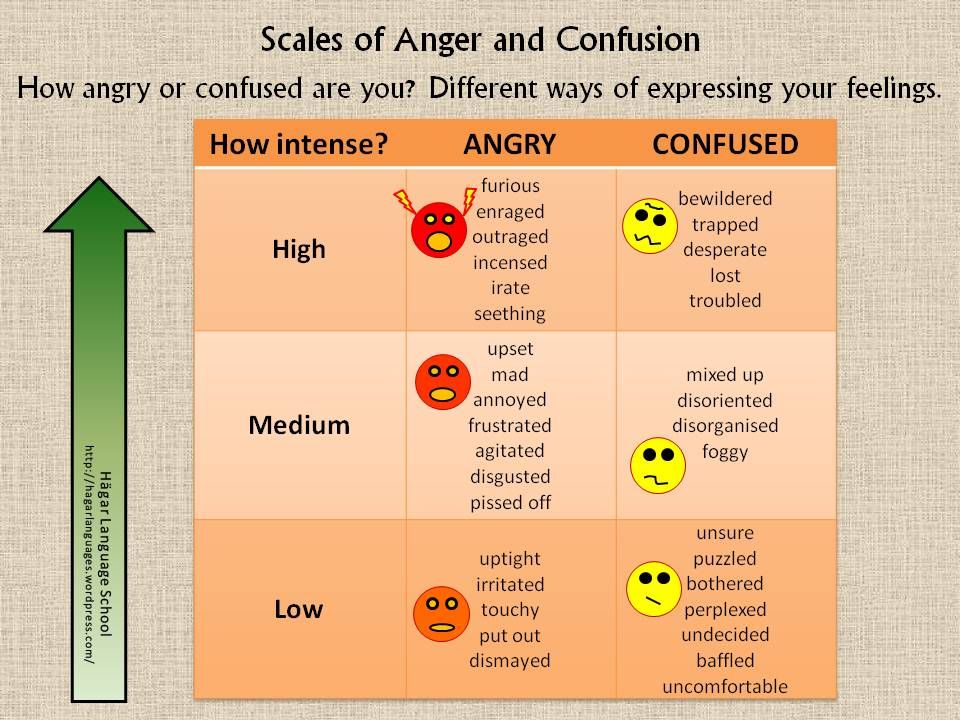
5. Emotional release
Run, squat, lock yourself in a room and forcefully paint a piece of paper, hit a pillow, scream in the forest... Any activity connected with the body helps to express aggression. In the long term, rest more often and change activities.
6. Give yourself first aid when you are angry
When a person is in a difficult condition, it is important for him to connect his body, emotions and thoughts. This helps to pull yourself together and start behaving constructively.
► Ask yourself: "What do I feel in my body?" Answer it: trembling at the fingertips, heartbeat, etc. Concentrate on this.
► Next question: "What are my emotions?" I am angry, offended, annoyed, my self-esteem is wounded ... Track the emotion, name it.
► Last question: "What do I think?" For example, I think the situation is terrible, that I keep getting here, this is the 15th time I've blown up this week.
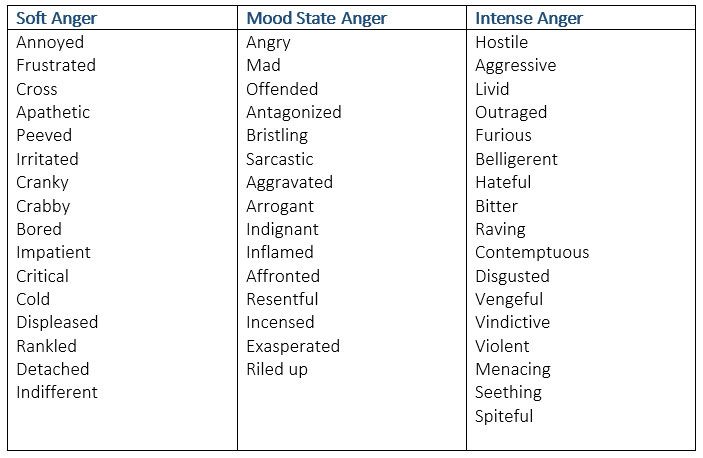
By answering all the questions, you will connect the body, emotions and thoughts. Despite the fact that nothing seems to have changed, you, as a person, will come into balance, from which it is easier to perform other actions. For example, talk.
7. Helping a loved one who can't handle his anger
One child once asked: "Why can daddy yell at us, but I can't?" If you understand that reproaches and ignoring only aggravate the situation, it's time to help loved ones.
To a partner who came home from work and started yelling at a child, you can, for example, say:
- I see that you are tired and therefore you break down. You find it hard to bear imperfection, that the dishes are not clean enough, or that the child is not well-behaved.
This should be said without irony, but sincerely, trying to understand how hard it really is for a person. For a child observing the situation, this option will also serve as a good example.
And your partner will probably not be able to verbalize his anger right away, but he will feel better.
8. Admit your mistakes
What do you do if you lose your temper, get angry with your child, and then feel guilty? Honestly ask for forgiveness:
- Forgive me. Sometimes I can't control my emotions, I don't want to do this, it's unpleasant for me, and you are not worthy of such treatment. Nobody deserves to be yelled at, I ask your forgiveness.
This is a very valuable experience for a child, unless, of course, you repeat an apology five times a day. He is good because, to firstly, the child sees: the parent is not God, he can make mistakes, which means that the child does not have to be perfect. Secondly, there is an understanding: a person can correct a mistake, apologize and improve relations. Thirdly, the child understands that the relationship with him is significant for the parent, his feelings are important, and he is ready for dialogue.
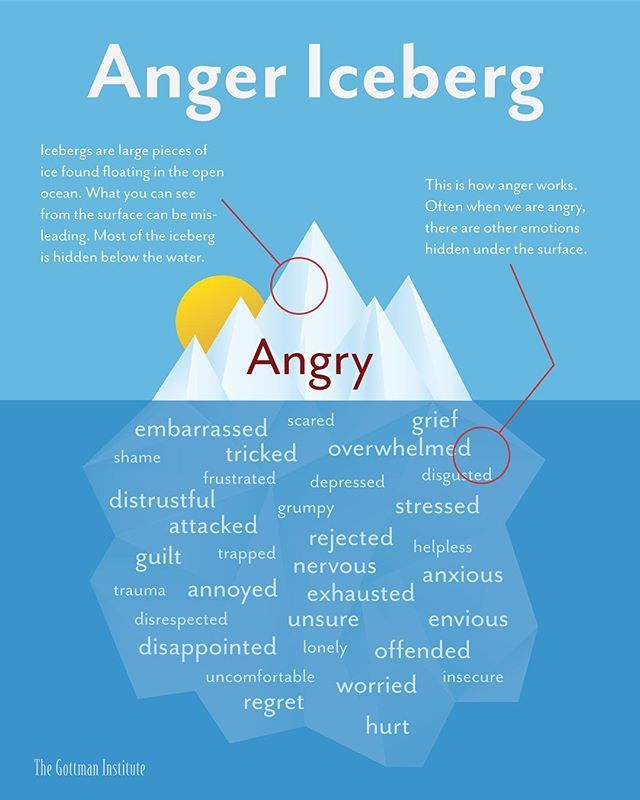
By the way, this scheme also works with a partner.
9. Go to psychotherapy
As a rule, you play emotionally difficult situations from childhood in a circle: find partners who look like parents, change one authoritarian boss for another, etc. You do this to deal with an old problem in an adult way, but use the old ways - and again it doesn't work. Psychotherapy helps to get to the bottom of frustrated emotions and develop new mechanisms that will help get out of the vicious circle.
Summarizing
There are no good and bad emotions. Each of them has a specific function, including anger. Healthy aggression helps protect yourself and defend your interests, while unhealthy destroys relationships.
Our way of dealing with anger begins in childhood, when we don't yet know how to deal with difficult emotions. Many adults then go around in circles, repeating scenarios of communication with parents in the family and at work, and try to replay past experiences.
The advantage of being an adult is that we can consciously learn to express anger in a constructive way and teach it to our children.
As much as we would like to be “positive” all the time, anger sometimes arises and needs to be expressed. Unexpressed anger accumulates and turns into passive aggression.
Each of us has our own "red buttons" that cause outbursts of anger. If you explore them and discuss with loved ones, you can avoid emotional outbursts.
Because of childhood amnesia, adults do not remember how angry they were when they were small, and do not realize the prohibition on anger, if any. For some, these feelings are still too complex. Psychotherapy helps to understand them.
Prepared by Maria Krasheninnikova-Khait based on the lecture “When Parents Are Angry” by practicing psychologist and psychotherapist Natalia Presler especially for “Learning Environment”
DID YOU LIKE THIS ARTICLE?
Live-courses
from 1 month
Online courses in the most relevant areas of psychology from leading practicing psychologists.